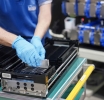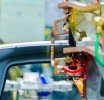Business
Toyota ready to invest us$10 billion in the U.S.
When Preparation Makes All the Difference

Summer is quietly giving way to autumn. Schools are back in session, days are getting shorter, and, of course, motorists are already starting to think about the approaching cold season. That morning, as I was having breakfast, my wife handed me a letter we’d received by mail. Our garage was reminding us to book an appointment for the installation of our winter tires, which were stored there. I was intrigued: in an age of emails and instant text messages, why bother sending a paper letter with a stamp?
My first reaction was to smile at this almost retro gesture. Yet as she read the letter, my wife immediately asked me to call and book, since a brake service was also recommended. That’s when I wondered: who still takes the time to read a paper letter these days, especially when a simple text message would do the job? My curiosity got the better of me, so I called. During my conversation with the service advisor, I asked to speak with Jonathan, the owner, to understand his choice.
A Return to Basics
To my surprise, Jonathan explained that this strategy was anything but outdated. When he relied solely on digital reminders, his response rate plateaued at 34%. Since reintroducing mailed letters, that rate has jumped to 82%. The reason? “It’s often the lady of the house who opens the mail and then makes sure her husband calls—or she books directly for the whole family.” Simple, but remarkably effective.
Jonathan stresses one key point: for his shop, planning is critical. He wants to spread out appointments as early as possible to avoid last-minute chaos. That’s why he hired two new recruits in September, already training on tire equipment. I asked whether he would have enough work for these new resources. His answer was clear.
Optimization and Efficiency
“Right now, we use storage season to inspect all the tires before peak season,” Jonathan explained. In practice, his team cleans the wheels, removes debris, re-balances them, applies a shine, and re-labels each set. This way, when customers return, their tires are ready for quick installation. This preparation frees up time in the schedule and maximizes the number of appointments during the busiest period.
But Jonathan doesn’t stop there. He also hired a new counter clerk who, alongside his colleague Robert, proactively contacts customers who need new tires. How do they know who needs replacements? The answer is clever: as early as spring, technicians note which tires are near the end of their life. Even if the customer still chooses storage, they’re told they’ll be contacted in the fall with promotions and free storage. Each year, between 20% and 35% of the 645 stored clients need replacements—a considerable pool that allows sales to be prepared and even new tires to be mounted on stored rims in advance.
A Model of Organization
What stands out beyond the method is the entrepreneurial mindset behind these initiatives. Jonathan doesn’t just follow trends—he measures, tests, and adjusts his practices to better serve clients and optimize operations. Using paper mail may seem old-fashioned, but in reality, it’s a solution perfectly suited to his context, backed by concrete results.
In an industry where every season brings new challenges, this approach shows that efficiency doesn’t always come from the latest technology, but from a deep understanding of customer behavior and rigorous organization.
Conclusion
Walking away from this conversation, I couldn’t help but admire the resourcefulness and creativity of entrepreneurs like Jonathan. He reminded me that beyond modern tools, it’s the art of preparing, planning, and anticipating that sets the best apart. A simple but essential lesson: sometimes, the key to excellence lies in the most concrete gestures… and in a letter received by mail.


L'Automobile Magazine
News
Business Directory



 En
En  Fr
Fr 


